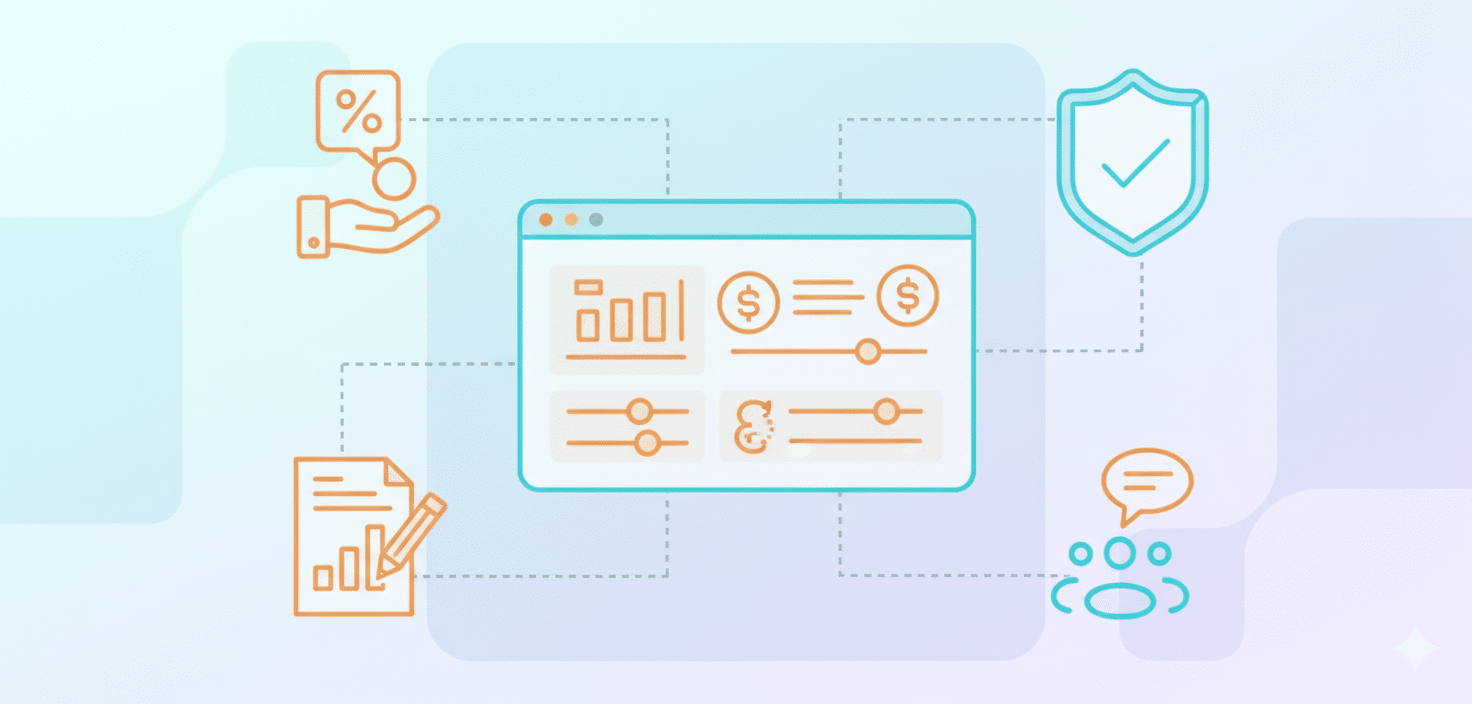Estratégias de Precificação
O que é Gerenciamento de Precificação SaaS?

O que é gerenciamento de preços SaaS?
Gerenciamento de precificação SaaS envolve as práticas e atividades empregadas por organizações SaaS relacionadas à determinação, modificação e otimização de seus planos de precificação de assinatura.
O gerenciamento de precificação SaaS visa alinhar o valor oferecido ao cliente e as flutuações do mercado para gerar receita para o negócio SaaS. Isso, no entanto, depende da compreensão do comportamento do cliente em relação ao uso, padrões e seleção de funcionalidades.
Quando bem executado, o gerenciamento de preços SaaS provavelmente otimizará a aquisição e retenção de clientes.
Precificação SaaS vs. tradicional: Qual a diferença?
A principal diferença reside no modelo de receita:
- A precificação SaaS é geralmente baseada no modelo de assinatura. Os usuários pagam pelo acesso à ferramenta por um período de tempo mais longo. Isso ajuda as empresas a garantir um fluxo de receita consistente. Além disso, a precificação SaaS pode ser ajustada para atender aos requisitos do cliente e do mercado.
- A precificação tradicional consiste em compras únicas de valores mais altos e é difícil de mudar. Além disso, empresas que praticam este método tendem a solicitar pagamentos adicionais por serviços como suporte.
Quais são os modelos de precificação SaaS comuns?
Os modelos de precificação SaaS são de múltiplos tipos, visando atender a diferentes requisitos de empresas SaaS.
|
Estratégia de Precificação |
Descrição |
Vantagem Principal |
Desvantagem Principal |
|
Assinatura |
Pagamento regular para acesso (modelo abrangente) |
Receita recorrente previsível, flexibilidade do cliente |
Risco de rotatividade se o valor não for entregue consistentemente |
|
Tarifa Fixa |
Preço único para todos os recursos/serviços |
Simples de entender e comercializar |
Pode não atender a diversas necessidades (deixando de gerar receita ou afastando clientes menores) |
|
em camadas |
Vários pacotes/níveis com conjuntos de recursos distintos |
Atende a diferentes segmentos de clientes com necessidades variadas |
Pode ser complexo de projetar e confundir clientes |
|
Baseado em Uso |
O cliente paga com base no consumo (ex: chamadas de API, armazenamento de dados) |
Atrai clientes com necessidades flutuantes (pague pelo que usar) |
Receita imprevisível, ansiedade do cliente sobre os custos |
|
Por Usuário |
Preço baseado no número de usuários individuais |
Simples para escalar com o crescimento de usuários |
Pode desestimular a colaboração/compartilhamento entre equipes |
|
Por Recurso |
Preço baseado em quais recursos específicos são desbloqueados |
Aumenta o valor percebido, personalização granular |
Pode resultar em silos de recursos e limitar a adoção da plataforma completa |
|
Freemium |
Versão básica gratuita, cobrando por recursos premium |
Atrai uma grande base de usuários, oportunidades de upselling |
Precisa de uma alta taxa de conversão para planos pagos para ser sustentável |
Principais métricas de precificação SaaS: Como são usadas?
As métricas de precificação SaaS são métricas SaaS geralmente utilizadas, que estudam a receita sob diferentes perspectivas:
|
Métrica |
Nome Completo |
Uso principal |
|
MRR |
Avaliar a estabilidade financeira mensal e a trajetória de crescimento. |
|
|
ARR |
Previsão de receita de longo prazo e avaliação. |
|
|
CLV |
Medir a receita total esperada de um único relacionamento com o cliente. |
|
|
NRR |
Medir o crescimento (ou perda) de receita da base de clientes existente ao longo do tempo (inclui upsells/downsells/churn). |
|
|
taxa de rotatividade |
Taxa de churn de clientes/receita |
Identificar problemas de retenção de clientes e avaliar a estabilidade. |
|
CAC |
Avaliar o custo-benefício dos esforços de vendas e marketing. |
Cálculo preciso é essencial, especialmente com modelos baseados em uso ou híbridos, devido às suas complexidades inerentes.
Como escolher a unidade de precificação certa?
Empresas SaaS precisam decidir como desejam construir sua precificação.
Isso significa observar a principal funcionalidade da qual o método de precificação será derivado (por usuário, por uso, por funcionalidade).
Uma vez que a empresa SaaS tenha definido este aspecto, os passos que se seguem são:
- Realize uma análise interna da empresa. Isso significa compreender o produto, suas funcionalidades e os custos de produção.
- Conduza uma pesquisa de mercado. Verifique seu setor específico, concorrentes e a disposição dos seus clientes para pagar.
- Selecione os critérios de precificação. Tudo o que você descobriu ao pesquisar interna e externamente precisa confirmar que a funcionalidade na qual você baseará sua precificação é a que entrega valor aos usuários.
Faça esta avaliação de precificação para cada região onde você planeja vender e tente adaptar sua estratégia com base em nossas descobertas.
Como a posição de mercado impacta a precificação SaaS?
A precificação SaaS pode ser impactada pela posição de mercado. Veja como:
- Líder de mercado: Se sua empresa SaaS ocupa uma posição de destaque em seu setor, a precificação premium pode ser aplicada.
- Novo participante: Se seu produto SaaS é novo no mercado, considere usar a precificação de penetração, Freemium ou Preços em Camadas para ganhar mais popularidade.
Conclusão
O gerenciamento de precificação SaaS analisa a totalidade dos processos e elementos envolvidos na decisão do preço apropriado para seu produto SaaS. A monetização da sua oferta deve focar em diversos aspectos, desde o estudo do mercado e dos clientes-alvo até a análise dos custos de produção e expectativas de lucro.